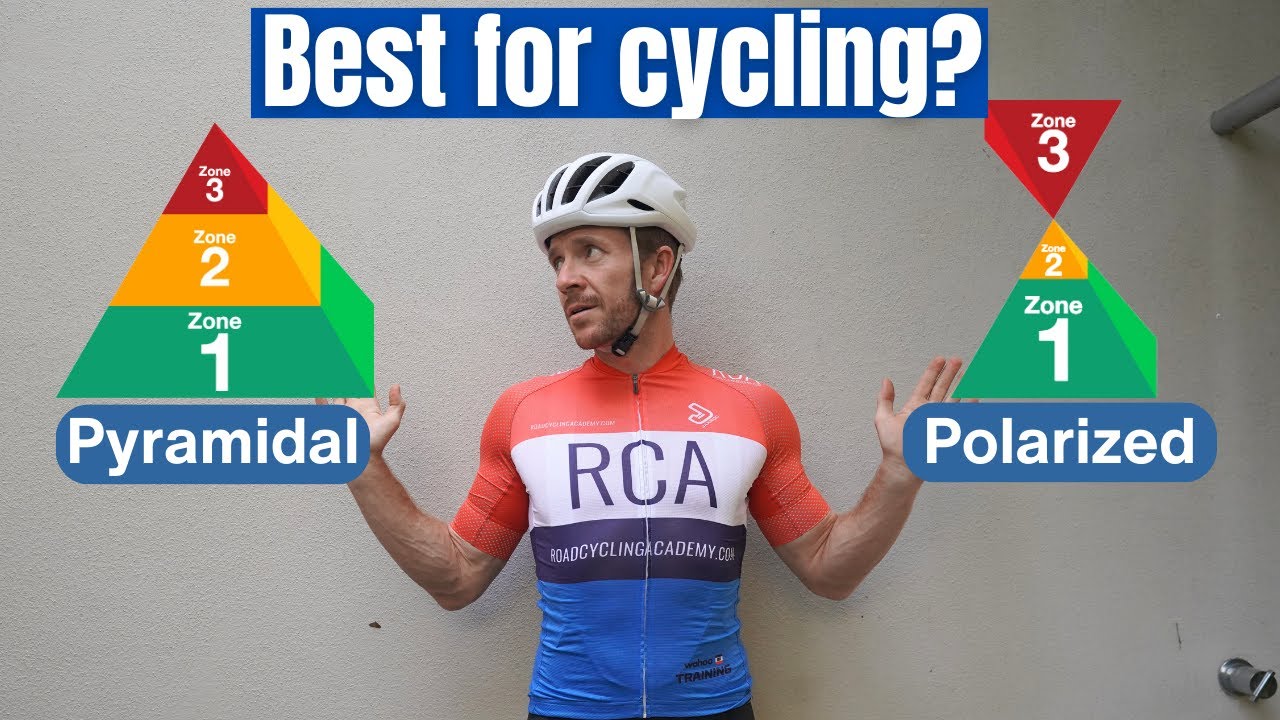Polarized VS Pyramidal Training (what’s BEST for Cyclists?) with Road Cycling Academy
Source: Road Cycling Academy Youtube Channel: Polarized VS Pyramidal Training (what’s BEST for Cyclists?)
Video Polarized VS Pyramidal Training (what’s BEST for Cyclists?) with Road Cycling Academy
Video Polarized VS Pyramidal Training (what’s BEST for Cyclists?) with Road Cycling Academy YouTube Channel.
Polarized VS Pyramidal Training (what’s BEST for Cyclists?)
Road Cycling Academy: Understanding Training Methods for Peak Performance
When it comes to road cycling, there are a plethora of training methods and techniques that can be used to improve performance. From pyramidal to polarized training, there are many approaches to consider when trying to maximize training effectiveness. In this article, we will delve into the concepts of pyramidal and polarized training, address misconceptions surrounding them, and explore the best approach for using them in combination.
Understanding the Three Zone Model
Before delving into the intricacies of pyramidal and polarized training, it is essential to understand the three zone model. This scientific-based model is not commonly used practically in a coaching sense, but it serves as a fundamental framework for training.
Zone one in the three zone model is defined by lactate threshold one (LT1) or ventilatory threshold one. This is the point at which a cyclist begins to experience increased effort but can still carry on a conversation. Zone two encompasses lactate threshold, functional threshold power (FTP), and ventilatory threshold, while zone three pertains to efforts above the lactate threshold.
It is important to note that translating the three zone model to a six zone model results in some differences. Zone one in the three zone model aligns with zones one and two in the six zone model, while zone two in the three zone model corresponds to the middle of zone four in the six zone model. Finally, zone three encompasses the top end of zone four, zone five, and zone six in the six zone model.
Polarized and Pyramidal Training Explained
Polarized training, popularized by Steven Stiler and Dr. Inigo San Millan, is often associated with spending a majority of time in zone one and zone three, with minimal, specific time in zone two. The misconception that polarized training involves 80% time in zone one and 20% time in zone three has been debunked, as there is indeed a small amount of time spent in zone two for specific purposes.
On the other hand, pyramidal training is often overshadowed by polarized training, even though it is commonly used in road cycling at elite and amateur levels. Pyramidal training follows a similar structure to polarized training in terms of spending time in zone one, but it differs in the distribution of time in zones two and three. This approach involves spending a substantial amount of time in zone two, followed by a bit less time in zone three, akin to the shape of a pyramid.
The Importance of Pyramidal Training in Road Cycling
Pyramidal training is particularly relevant in road cycling due to the emphasis on spending a significant amount of time under threshold and above zone two. Considering that many road cycling events involve sustained efforts in the sub-threshold and sweet spot zones, pyramidal training provides a more targeted approach to preparing for such demands.
Furthermore, the utilization of a pyramidal approach in training can mimic the physiological demands of road cycling events, such as long climbs and mountain stages. By prioritizing training in the sub-threshold and sweet spot zones, cyclists can enhance their ability to sustain efforts within these intensity ranges, ultimately leading to improved performance.
The Shift from Pyramidal to Polarized Training
A study conducted on endurance runners revealed an interesting finding that supports the transition from pyramidal to polarized training. The group that started with pyramidal training and then shifted to polarized training displayed an incremental improvement in performance compared to other cohorts. This evidence underscores the potential benefits of adopting a periodized approach to training, wherein the focus gradually shifts from building a robust aerobic engine to honing specific physiological capacities for peak performance.
Practical Application of Periodization in Training
Incorporating periodization into a cyclist’s training plan involves working through different intensity zones to build a strong aerobic foundation before progressively targeting more specific physiological adaptations closer to an event. This approach emphasizes the importance of periodizing training intensity and volume to achieve peak fitness when it matters most.
The Road Cycling Academy’s Training Methodology
At the Road Cycling Academy (RCA), the coaching methodology revolves around periodization, with an emphasis on gradually progressing through training zones to develop a robust aerobic engine. The approach involves transitioning from pyramidal training to polarized training to target specific performance peaks leading up to events.
In Conclusion
The complexities of pyramidal and polarized training in road cycling can be quite perplexing, but understanding the nuances of each approach is crucial for optimizing training effectiveness. By implementing a periodized training approach that involves transitioning from pyramidal to polarized training, cyclists can strategically build a strong aerobic foundation and then hone specific physiological capacities for peak performance.
In the realm of road cycling, the Road Cycling Academy serves as a beacon of expertise, guiding cyclists through evidence-based training methodologies tailored to maximize performance. As the landscape of cycling continues to evolve, the integration of periodization and targeted training approaches will undoubtedly play a pivotal role in shaping the training regimens of dedicated cyclists seeking to reach new heights in their endeavors.
The opinions expressed in this space are the sole responsibility of the YouTube Channel Road Cycling Academy and do not necessarily represent the views of CicloNews.










